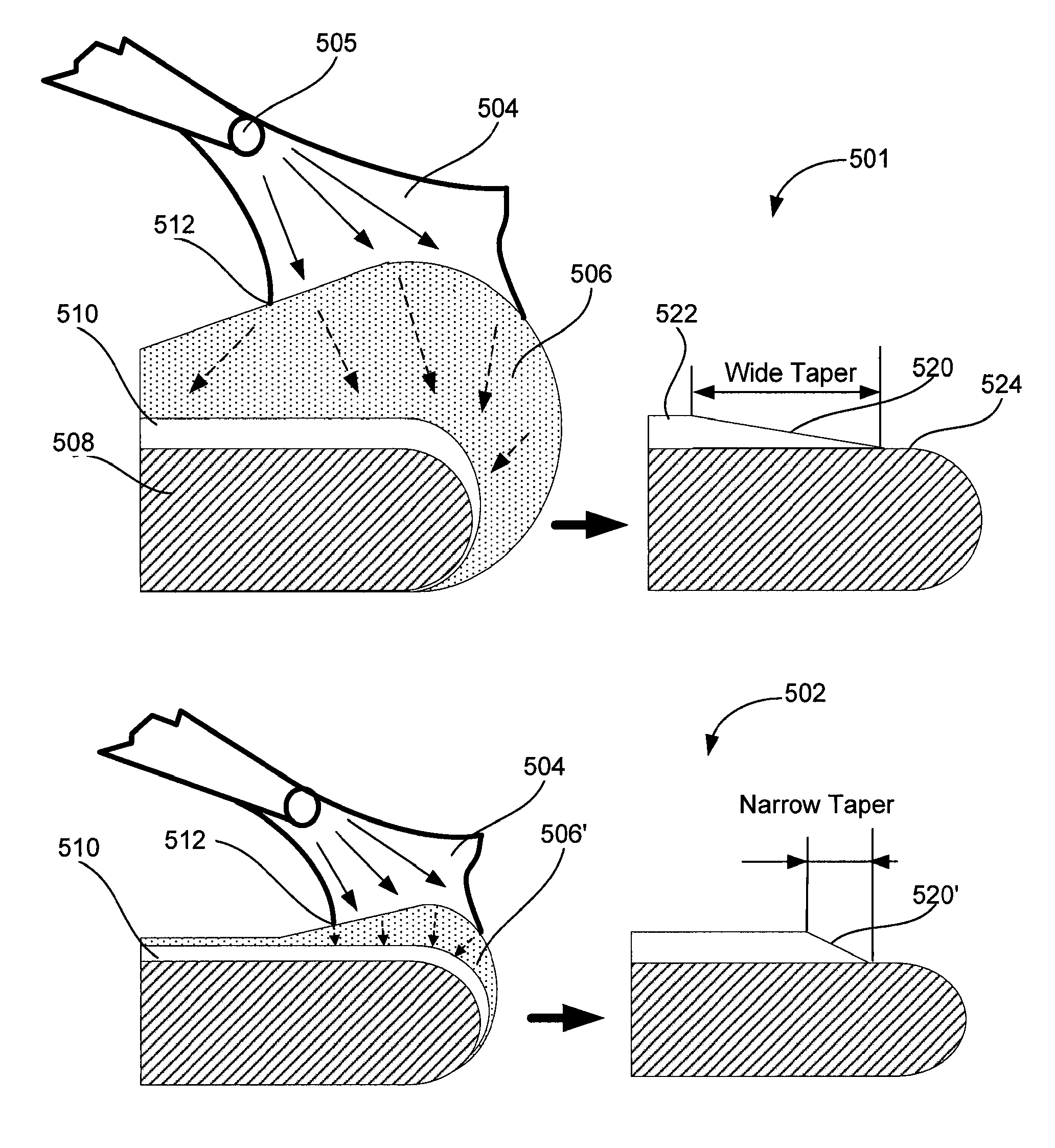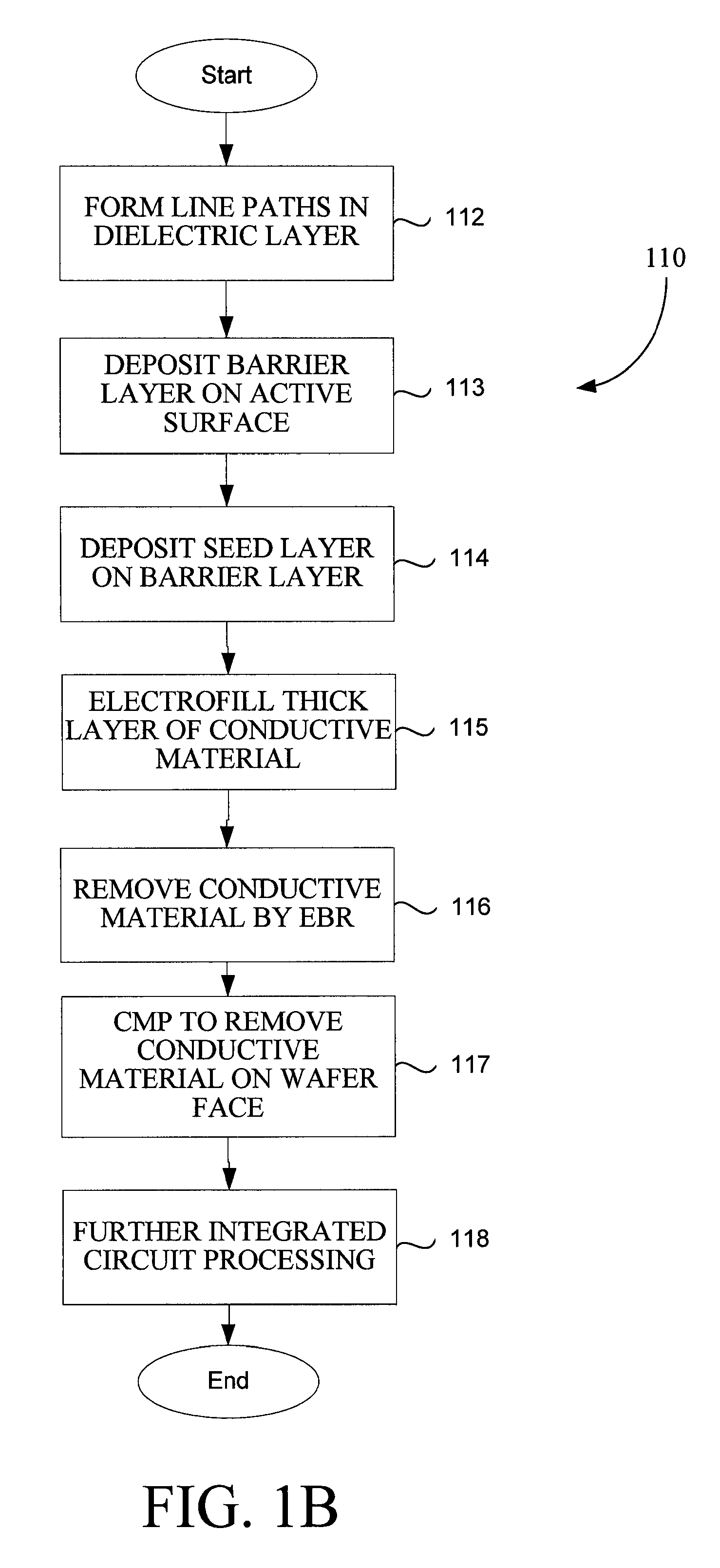Apparatus and method for edge bevel removal of copper from silicon wafers
a technology of edge bevel removal and silicon wafers, which is applied in the direction of electrostatic cleaning, cleaning processes and apparatus, chemical apparatus and processes, etc., can solve the problems of significant process impediments and compromise of edge bevel etching process quality, etc., to promote diffusion, enhance etching rate, and high speed rotation
- Summary
- Abstract
- Description
- Claims
- Application Information
AI Technical Summary
Benefits of technology
Problems solved by technology
Method used
Image
Examples
example
[0078]The following example is provided to further illustrate aspects and advantages of the present invention. This example is provided to exemplify and more clearly illustrate aspects of the present invention and is in no way intended to be limiting.
[0079]A standard 300-mm wafer with a 0.5 μm copper bevel edge was provided. The wafer was positioned and aligned in a Novellus Sabre™ system equipped with the deflector shield. The pre-rinse operation was performed using de-ionized water for 2 seconds at 400 rpm. The water was then turned of, and the wafer was accelerated to 600 rpm for another 2 seconds during the wet film thinning operation. In the following operation, the wafer was slowed down to 200 rpm and the etchant including 20% of sulfuric acid and 28% of hydrogen peroxide was applied in two stages. In the first stage, 1 ml of the etchant was delivered at 0.3 ml / sec flow rate. In the second stage, additional 3 ml of the etchant was delivered at 0.15 ml / sec. The overall etching ...
PUM
| Property | Measurement | Unit |
|---|---|---|
| width | aaaaa | aaaaa |
| width | aaaaa | aaaaa |
| radius | aaaaa | aaaaa |
Abstract
Description
Claims
Application Information
 Login to View More
Login to View More - R&D
- Intellectual Property
- Life Sciences
- Materials
- Tech Scout
- Unparalleled Data Quality
- Higher Quality Content
- 60% Fewer Hallucinations
Browse by: Latest US Patents, China's latest patents, Technical Efficacy Thesaurus, Application Domain, Technology Topic, Popular Technical Reports.
© 2025 PatSnap. All rights reserved.Legal|Privacy policy|Modern Slavery Act Transparency Statement|Sitemap|About US| Contact US: help@patsnap.com



